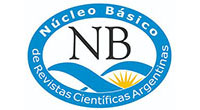La evolución térmica de una pasta de loza. Su aplicación en la producción de sentido artístico
Keywords:
cerámica, pasta de loza, evolución térmicaAbstract
La cerámica científica se define como el conjunto de materiales inorgánicos no metálicos (Mari, 1998), que se clasifican en dos grupos a partir de sus propiedades texturales: por un lado, loza, gres y porcelana; por otro, los cerámicos de avanzadas. La cerámica artística es definida y tomada en cuenta como el barro madre que, desde el sedentarismo, acompañó a la civilización humana como vehículo que sirvió para materializar, con ritos, las ideas, las necesidades y las subjetividades del hombre al dejar sus huellas en los materiales realizados desde las comunidades de origen hasta la contemporaneidad. En consecuencia, con resultados diferentes y paralelos, tanto la ciencia como el arte se sirven del mismo material. La correlación entre los aportes científicos y los recursos artísticos contribuyeron a los procesos de elaboración proyectual y producción de la obra “Basilocis”. Las estrategias estéticas se vieron influenciadas, de manera positiva, por la convergencia entre dos aspectos que en la actualidad aún seDownloads
Downloads
Published
How to Cite
Issue
Section
License
According to these terms, the material can be copied and redistributed by any means or in any format as long as a) the author and original source of the publication are quoted (magazine and URL of the work), access to the license is provided and whether changes have been made is mentioned; and b) the material is not used for commercial purposes.
The cession of non-exclusive rights means that after the publication (post print) in Boletín de Arte the authors can publish their work in any language, means and format; in such cases it must be mentioned that the material was originally published in this magazine.
Such cession also means the authorization of the authors for the work to be collected by SEDICI, the institutional archive of the National University of La Plata, and to be spread in the databases that the editorial team considers appropriate to increase the visibility of the publication and its authors.
Moreover, the magazine encourages the authors to deposit their productions in other institutional and thematic archives under the principle that offering the society the scientific and academic production without any restrictions contributes to a greater exchange of the global knowledge.































